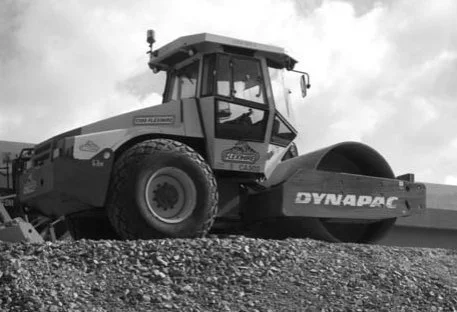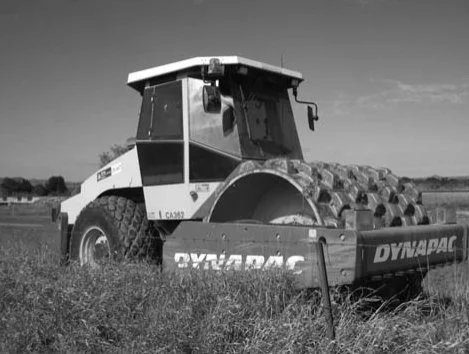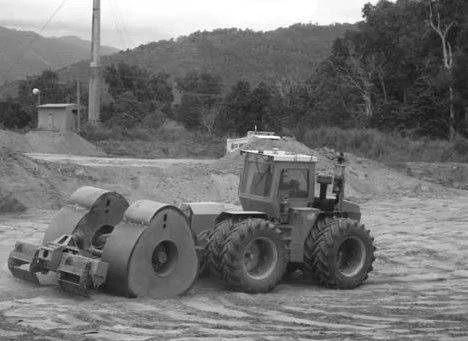Soil Compaction Rollers
The success of any new road, highway, or runway is not determined by the design table; it is forged on site by the tireless action of the compaction roller. For civil engineers, operations managers, and field staff, compaction is the single most critical, yet often underestimated, step in the entire pavement lifecycle. A 1% deficit in density can reduce a pavement’s expected life by over 10%, transforming a reliable asset into a costly maintenance burden.
This deep dive moves beyond simply hitting the density target to explore the granular science, the right equipment choices, and the advanced quality assurance methods that ensure your road maintains its structural integrity for decades.
Phase I: The Fundamentals—Compaction and the Subgrade
Compaction is not merely flattening the soil; it is the process of removing air voids and rearranging soil particles to achieve maximum density and strength. This process is governed by fundamental soil mechanics.
The Critical Role of Optimum Moisture Content (OMC)
Before any roller touches the soil, the Optimum Moisture Content (OMC) must be established.
The OMC is the sweet spot: the moisture level at which a given effort (roller pass) yields the maximum dry density of the soil.
The critical error in compaction is missing this narrow window. Deviations cause distinct and detrimental failures:
Too Dry: The friction between soil particles is too high. The roller's energy is wasted overcoming this friction, with the particles unable to rearrange into a dense state. The result is a subgrade that is loose and prone to settlement.
Too Wet: Water occupies the air voids, and since water is virtually incompressible, it absorbs the compaction energy. This creates a hydrostatic pressure that resists further densification, leading to a "spongy" or unstable subgrade that will fail under load.
Field Quality Assurance (QA) teams must rigorously monitor OMC using techniques like nuclear or non-nuclear density gauges.
Missing the OMC window is the primary cause of early subgrade failure, leading to surface cracking and rutting years down the line.
Matching the Roller to the Soil Type
The first commandment of compaction is simple: match the tool to the material.
1. Smooth-Drum Rollers (Vibratory and Static): These are the workhorses for granular and non-cohesive soils (sands, gravels, crushed rock). They rely on static weight for kneading and vibratory energy (dynamic force) to overcome internal friction. The eccentric mass inside the drum sends pressure waves through the soil, rapidly achieving deep-layer density.
Credit: Braja M. Das
2. Tamping-Foot (Sheepsfoot) Rollers: These are essential for cohesive soils (clays and silts). The projecting 'feet' apply high pressure to a small area, kneading and compacting the soil from the bottom up. Crucially, the feet break down the soil's cohesive bonds and help seal the surface after compaction is achieved, preventing moisture re-entry.
Credit: Braja M. Das
3. Impact Rollers: They have three to five sides and deliver strong compaction energy each time a side hits the ground. They are used for achieving deep compaction, often in problematic or large-scale earthworks projects, and are highly effective for granular materials.
Credit: Braja M. Das
Phase II: Beyond the Surface—Advanced Diagnostics
A project may meet its compaction target, but uniformity and deep-layer stability are just as important. Modern Pavement Management requires diagnostics that look beneath the finished surface.
Falling Weight Deflectometer (FWD) Testing
The FWD is indispensable for assessing the structural capacity of a completed pavement layer. By dropping a known weight onto the surface and measuring the resulting deflection bowl, engineers can calculate the stiffness and resilient modulus of the subgrade and base layers. This data is critical for validating the design and predicting the asset's long-term load-bearing capacity. A pavement that looks visually perfect but exhibits excessive FWD deflection has a limited lifespan.
The Rise of Intelligent Compaction (IC)
Intelligent Compaction (IC) represents the future of Operations Management. IC rollers use onboard GPS and accelerometers to continuously measure material stiffness (Compaction Meter Value, or CMV) and map the coverage area in real time. This system eliminates the costly, time-consuming process of random spot checks and ensures accurate uniformity, a factor proven to extend road life significantly. IC allows the field supervisor to address weak or soft spots immediately, before the material cools and cures.
Phase III: The Management View—Long-Term Value
For Project Managers and Senior Engineers, compaction decisions translate directly into Lifecycle Cost Analysis (LCA).
The cost of inadequate compaction is paid over and over again through premature maintenance, increased user delays from repairs, and eventual structural failure. A well-compacted road requires less frequent intervention, allowing management teams to prioritise preventive maintenance (like crack sealing and thin overlays) over expensive corrective maintenance (full-depth patching and rehabilitation).
Effective Pavement Management Systems rely on accurate data, and that data starts with the initial construction quality. Every Pavement Condition Index (PCI) score, every International Roughness Index (IRI) reading, and every repair budget stems from the density achieved by the compaction crew.
Conclusion: Paving the Way for Durable Assets
The compaction roller is the engine of road durability. Mastering its use means moving beyond simple effort-based specifications to adopting a sophisticated, data-driven approach that integrates soil mechanics, advanced Quality Assurance, and real-time feedback systems like Intelligent Compaction.
For Civil Engineering professionals, understanding these layers of complexity is the key to delivering assets that endure. Ignoring them is a guarantee of becoming trapped in a cycle of reactive, budget-draining maintenance



